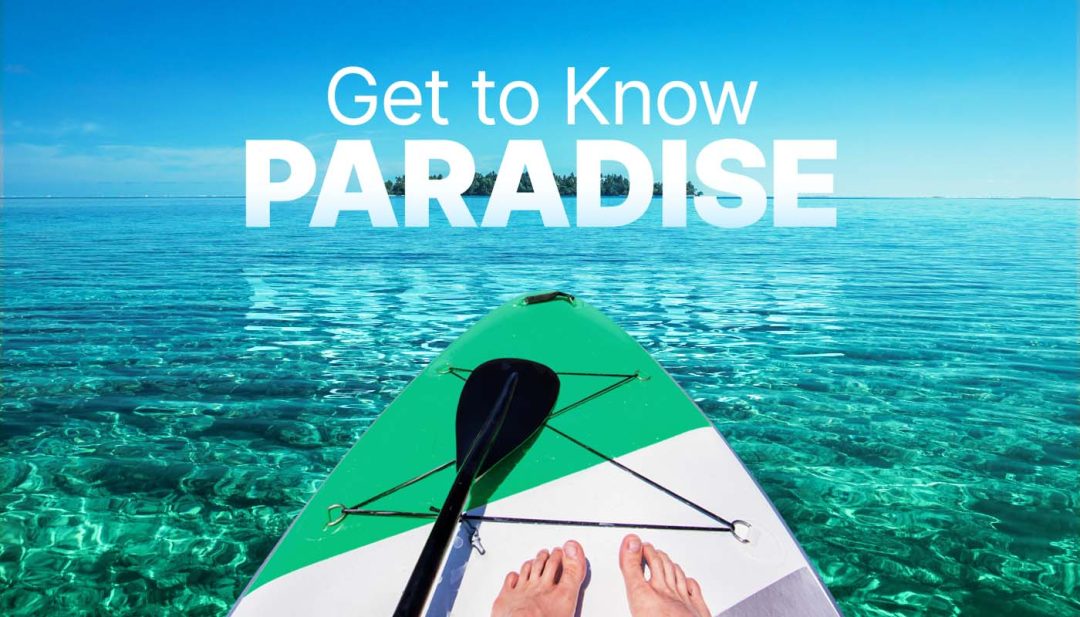Pristine beaches, bungalows sitting over gently lapping waves, palm trees for days … what else comes to mind when you think of the island paradise that is Tahiti?
Well, if you’re here reading this, then noni should be the first thing that comes to mind, of course! There is, however, so much more to Tahiti than what we’ve just mentioned. So, for all of you working hard to secure your spot on this year’s Great Escape: Tahitian Dream trip this November, we’ll make sure you’ll be ready to fully indulge in paradise when you go.
But first, a little geography lesson.
In total, the overseas collectivity of French Polynesia is comprised of 118 islands and atolls (totaling 1359 square miles/3521 square kilometers) spread out over roughly 1.5 million square miles (4 million square kilometers) of the South Pacific Ocean — roughly the size of Western Europe. The islands are further divided into five groups:
- The Austral Islands
- The Gambier Islands
- The Marquesas Islands
- The Society Islands
- The Tuamotu Archipelago
There are approximately 279,000 residents across the 75 inhabited islands, and Tahiti — part of the Society Islands — is home to almost 70% of the nation’s population.
Got all that? Now it’s time for the real fun.
1. The Tahitian alphabet only has 13 letters.
The Tahitian language consists of the vowels a, e, i, o and u, and the consonants f, h, m, n, p, r, t and v. Other than the letter h, which is pronounced ‘sh’ when it comes after an i or an o, every letter is pronounced the same as it is in English. While the official language is French, and many people speak English (especially in tourist areas), Tahitian and other local languages are still spoken throughout the islands.
Has someone done something nice for you lately? Thank them by saying it in Tahitian — Mauruuru!
2. The word ‘tattoo’ is derived from a Tahitian word.
Got ink? Well, you can thank, in part, the people of Polynesia. We get our word from theirs, tatau, which means ‘to mark,’ though that is the most basic meaning and there are many cultural nuances that are also attributed to the word.
The first known practice of tattooing was by Captain James Cook when he saw the procedure on a trip to the Marquesas Islands. The tradition had already been going strong at that point and continues to this day.
3. The overwater bungalow was invented in Tahiti.
Want to be able to open your door and jump right into the pristine ocean? Tahiti is the place to do it. Not only are there many overwater bungalows across the islands (and around the world now), but they were first constructed on Raiatea, one of the Islands of French Polynesia. To deal with staying in a hotel without beach access, three American ex-pats from California — known as the Bali Hai Boys — created the bungalow so guests could literally open their doors and hop right into the water to go snorkeling. Not a bad way to spend a morning, afternoon or evening if you ask us!
4. There are no poisonous insects or snakes in French Polynesia.
Hate creepy crawlies and want to find a place where you don’t have to worry about them? Head to Tahiti! Thanks to its remote location in the South Pacific, there aren’t all that many types of animals that live on the islands, including those of the poisonous variety. The waters around the island teem with sea life, and there are wild horses on the Marquesas islands, but you don’t have to worry about something slithering up to you while you are enjoying sun and fun.
5. In 1966, Marlon Brando bought an island in French Polynesia.
Marlon Brando, known for countless roles over his long career, including Vito Corleone in The Godfather and Stanley Kowalski in A Streetcar Named Desire, used the vast wealth he accrued from acting to purchase the island of Teti’aroa in 1966 for $270,000 ($2.36 million in 2022). The island is composed of 12 islets and today is home to an ultra-exclusive, low-impact resort — The Brando — which has been open since 2014.


